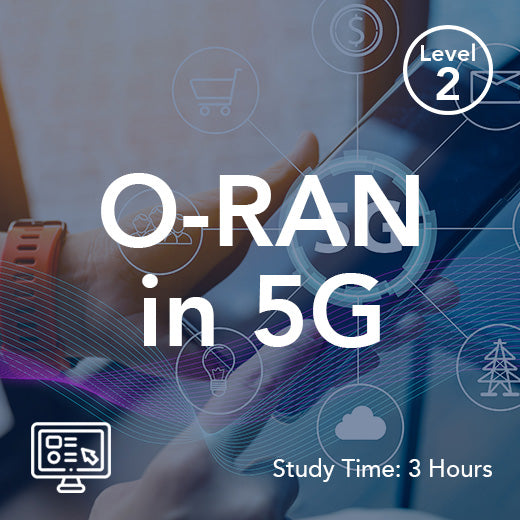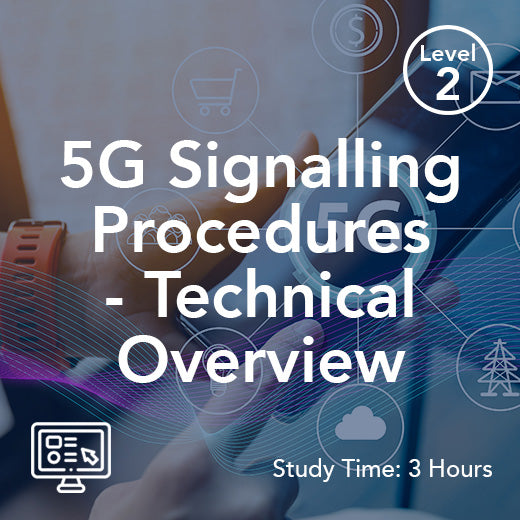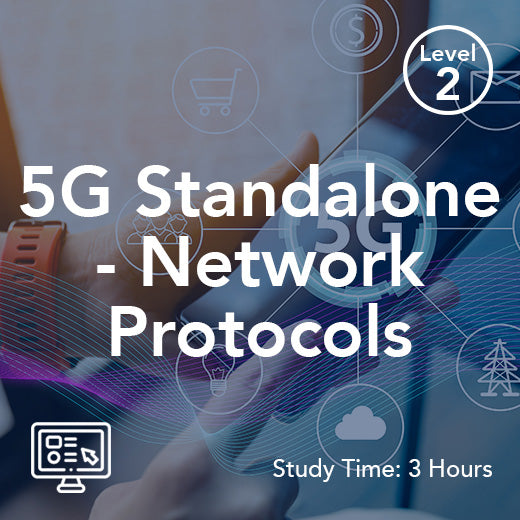Comprendre la LTE : qu’est-ce qui en fait l’épine dorsale de la connectivité moderne ?
- , par Stephanie Burrell
- 12 min temps de lecture
À l'ère du numérique, où rester connecté est plus crucial que jamais, la LTE (Long Term Evolution) s'impose comme un acteur incontournable des communications mobiles. Véritable pilier de la connectivité moderne, la LTE a transformé notre façon d'accéder à l'information, de regarder nos séries préférées en streaming et de rester en contact avec nos proches. Sa capacité à offrir des débits de données plus rapides et des connexions plus fiables en a fait un élément essentiel de notre quotidien, alimentant tous nos appareils, des smartphones aux tablettes. Cet article de blog a pour objectif de démystifier la LTE et d'explorer les raisons pour lesquelles elle est devenue la pierre angulaire d'une communication fluide dans notre monde en constante évolution.
Introduction à la LTE
L'histoire de la LTE (Long Term Evolution) est fascinante et a profondément transformé les communications mobiles. Cette section explore ses origines, ses principes fondamentaux et sa comparaison avec les technologies mobiles précédentes, offrant ainsi un panorama complet de son évolution.
Origines et développement
L' origine de la LTE de quatrième génération remonte à la nécessité de disposer de réseaux mobiles plus rapides et plus performants. Développée par le 3GPP (3rd Generation Partnership Project), la LTE a vu le jour en réponse aux limitations de la technologie 3G. Son objectif était d'améliorer les débits de données et de réduire la latence, offrant ainsi une expérience utilisateur optimale.
Le développement de la LTE a été le fruit d'une collaboration entre de nombreux acteurs, notamment les opérateurs de réseau, les fabricants d'équipements et les instituts de recherche. Cette collaboration a permis de concevoir une technologie flexible et évolutive, capable de répondre à la demande croissante en données mobiles.
Parmi les étapes clés du développement de la LTE figurent l'introduction de la LTE-Advanced et de la LTE-Advanced Pro, qui ont permis d'améliorer encore les débits de données et l'efficacité du réseau. Ces évolutions se sont appuyées sur les principes fondamentaux de la LTE, consolidant ainsi sa place comme pierre angulaire de la connectivité moderne.
Principes de base de la LTE
La technologie LTE repose fondamentalement sur plusieurs principes clés qui lui confèrent ses hautes performances. L'un des plus importants est l'utilisation de l'accès multiple par répartition orthogonale de la fréquence (OFDMA) pour la transmission des données en liaison descendante. Cette technologie permet à plusieurs utilisateurs d'accéder simultanément au réseau sans interférence.
Un autre principe consiste à adopter l'accès multiple par répartition en fréquence à porteuse unique (SC-FDMA) pour la transmission montante. Cette approche réduit le rapport puissance crête/puissance moyenne (PAPR), ce qui améliore l'efficacité énergétique des appareils mobiles.
La LTE utilise également la technologie MIMO (Multiple Input, Multiple Output) , qui emploie plusieurs antennes à l'émission et à la réception. Cette technologie améliore le débit et la fiabilité des données en exploitant la diversité spatiale.
LTE par rapport aux technologies précédentes
En comparant la LTE à ses prédécesseurs, plusieurs améliorations apparaissent clairement. Le tableau ci-dessous récapitule les principales différences entre les technologies LTE, 3G et 2G :
Fonctionnalité | LTE | 3G | 2G |
|---|---|---|---|
Vitesse de données | Jusqu'à 100 Mbps | Jusqu'à 2 Mbps | Jusqu'à 0,1 Mbit/s |
Latence | < 10 ms | ~100 ms | ~500 ms |
Technologie | OFDMA, MIMO | CDMA/UMTS | GSM/EDGE |
Ces avancées expliquent pourquoi la LTE est devenue le choix privilégié pour la connectivité mobile moderne, offrant une vitesse, une efficacité et une capacité supérieures.
Composants essentiels de la LTE
L'efficacité des technologies de réseaux mobiles, comme la LTE, repose sur divers composants essentiels, chacun jouant un rôle crucial dans leur fonctionnement. Cette section explore l'importance des bandes de fréquences, le rôle des technologies OFDMA et SC-FDMA, ainsi que l'importance de la technologie MIMO dans les réseaux LTE.
Le rôle des bandes de fréquences
Les bandes de fréquences sont essentielles au fonctionnement de la LTE, car elles déterminent la portée et la capacité du réseau. La LTE fonctionne sur plusieurs bandes de fréquences, chacune ayant ses propres caractéristiques et cas d'utilisation.
Les bandes de basses fréquences (par exemple, 700 MHz) offrent une couverture étendue avec une meilleure pénétration à travers les obstacles, ce qui les rend idéales pour les zones rurales et périurbaines.
Les bandes de fréquences moyennes (par exemple, 1800 MHz) offrent un équilibre entre couverture et capacité, adapté aux environnements urbains.
Les bandes de haute fréquence (par exemple, 2600 MHz) offrent une capacité de données élevée mais une couverture limitée, idéales pour les centres-villes densément peuplés.
Cette utilisation stratégique des bandes de fréquences garantit que les réseaux LTE peuvent offrir des performances constantes dans différents environnements.
Comprendre l'OFDMA et le SC-FDMA
Les technologies OFDMA et SC-FDMA sont essentielles pour différencier la LTE des réseaux précédents. L'OFDMA permet une utilisation efficace du spectre en le divisant en sous-porteuses plus petites. Cette division garantit la prise en charge simultanée de plusieurs utilisateurs sans interférence.
Le SC-FDMA, quant à lui, est utilisé pour les communications montantes. Il combine les avantages de l'OFDM avec la modulation à porteuse unique, ce qui permet de réduire la consommation d'énergie et d'améliorer l'efficacité des appareils mobiles.
Ces deux technologies contribuent à la capacité de la LTE à prendre en charge des débits de données élevés, une capacité accrue et une expérience utilisateur améliorée, ce qui en fait des composantes indispensables du réseau.
Importance de la technologie MIMO
La technologie MIMO est essentielle aux hautes performances de la LTE. Grâce à l'utilisation de plusieurs antennes à l'émission et à la réception, la MIMO améliore le débit et la fiabilité des données. Ce résultat est obtenu grâce à la diversité spatiale, qui permet l'envoi et la réception simultanés de plusieurs flux de données.
L'impact de la technologie MIMO est particulièrement visible dans les environnements à forte densité d'utilisateurs, tels que les zones urbaines et les lieux publics très fréquentés. Elle réduit les risques d'interférences et améliore la qualité du signal, garantissant ainsi une connexion plus stable.
Globalement, la mise en œuvre de la technologie MIMO est cruciale pour parvenir à la connectivité rapide et fiable promise par la LTE.
Avantages de la LTE
Les avantages de la LTE vont bien au-delà de la simple connectivité : elle offre des améliorations significatives en matière de débit de téléchargement, de capacité du réseau et de latence. Cette section examine ces avantages et explique comment ils contribuent à faire de la LTE la pierre angulaire des communications modernes.
Rapidité et efficacité
La vitesse et l'efficacité figurent parmi les atouts les plus appréciés de la LTE. Avec des débits de données pouvant atteindre 100 Mbit/s, la LTE permet des téléchargements rapides, une diffusion en continu fluide et une navigation sans encombre.
Cette rapidité est complétée par une utilisation efficace du spectre radioélectrique grâce à la technologie LTE, ce qui permet d'optimiser les ressources du réseau. La combinaison de ces facteurs améliore la satisfaction des utilisateurs et répond à la demande croissante de données mobiles.
De plus, l'architecture efficace de la LTE réduit la congestion du réseau, ce qui se traduit par une connexion plus réactive et plus fiable pour tous les utilisateurs.
Capacité du réseau améliorée
La capacité du réseau est un autre point fort du haut débit mobile LTE. Grâce à des technologies avancées comme le MIMO et l'OFDMA, les réseaux LTE peuvent accueillir simultanément un grand nombre d'utilisateurs sans compromettre les performances.
Cette capacité accrue est particulièrement avantageuse dans les zones à forte densité de population, comme les stades et les centres-villes, où la demande de connectivité est élevée. La capacité de la LTE à gérer de telles situations garantit aux utilisateurs une connexion continue, même dans les environnements les plus difficiles.
De plus, l'évolutivité des réseaux LTE permet une expansion future, ce qui les rend parfaitement adaptés au nombre croissant d'appareils connectés.
Latence réduite dans la communication
La réduction de la latence est un atout majeur de la LTE, avec des niveaux de latence généralement inférieurs à 10 millisecondes. Ce temps de réponse rapide améliore les applications en temps réel, comme les appels vidéo et les jeux en ligne.
La réduction de la latence améliore également l'expérience utilisateur globale, rendant les interactions plus fluides et réactives. Ceci est essentiel pour les applications nécessitant un retour d'information immédiat, telles que la réalité virtuelle et les systèmes de télécommande.
La faible latence des réseaux LTE contribue à leur polyvalence, prenant en charge une large gamme de cas d'utilisation et garantissant des performances constantes.
LTE dans la vie quotidienne
L'impact de la LTE dépasse largement le cadre de la connectivité mobile traditionnelle et influence divers aspects de la vie quotidienne. Cette section explore le rôle de la LTE dans la connectivité mobile, son influence sur l'Internet des objets et les appareils intelligents, ainsi que les perspectives d'avenir de cette technologie.
Impact sur la connectivité mobile
La connectivité mobile a été révolutionnée par la LTE, offrant aux utilisateurs un accès rapide et fiable à l'information et aux services. L'adoption généralisée de la LTE a permis d'améliorer considérablement les débits internet mobile, optimisant ainsi l'expérience utilisateur.
Cette transformation a permis le développement de nouvelles applications et de nouveaux services, allant du streaming vidéo de haute qualité à la navigation en temps réel, faisant des appareils mobiles des outils indispensables au quotidien.
L'impact de la LTE sur la connectivité mobile est évident dans la dépendance croissante aux smartphones et la demande grandissante d'applications gourmandes en données.
Rôle dans l'Internet des objets et les appareils intelligents
L'Internet des objets (IoT) et les appareils intelligents dépendent fortement des communications haut débit sans fil via LTE pour une connectivité optimale. Grâce à ses débits de données élevés et à sa faible latence, la LTE offre la connexion stable nécessaire à la prise en charge d'un large éventail d'applications IoT.
Des maisons intelligentes aux véhicules connectés, la LTE permet aux appareils de communiquer efficacement, améliorant ainsi leurs fonctionnalités et l'expérience utilisateur. Cette connectivité est essentielle au développement des villes intelligentes et des solutions innovantes qui améliorent la qualité de vie.
En résumé, la LTE joue un rôle essentiel dans le développement de l'Internet des objets et des technologies des appareils intelligents, stimulant ainsi les progrès dans divers secteurs.
Perspectives et développements futurs
L'avenir de la LTE est prometteur, grâce aux progrès constants visant à améliorer ses performances et à étendre ses capacités. Ces développements se concentrent sur l'augmentation des débits de données, la réduction de la latence et l'amélioration de l'efficacité du réseau.
L'une des évolutions attendues est l'intégration de la technologie 5G, qui complétera la LTE en offrant une capacité encore plus grande et une latence plus faible. Cette synergie favorisera l'émergence d'applications telles que les véhicules autonomes et la réalité augmentée.
Avec l'évolution constante des technologies, la LTE restera un élément fondamental de la connectivité mondiale, s'adaptant pour répondre aux besoins en constante évolution des utilisateurs.
Défis et limites
Malgré ses nombreux avantages, la LTE se heurte à plusieurs défis et limitations. Cette section aborde des problèmes tels que la rareté du spectre, la congestion du réseau et les questions de sécurité, et explore des solutions potentielles à ces obstacles.
Problèmes de rareté du spectre
La rareté du spectre constitue un défi majeur pour les réseaux LTE, car le spectre disponible est limité et très recherché. Cette rareté peut entraîner une congestion du réseau et une baisse de ses performances, notamment dans les zones densément peuplées.
Pour remédier à cette situation, des stratégies de réaménagement et de partage du spectre sont mises en œuvre, réattribuant le spectre existant pour une utilisation plus efficace. Par ailleurs, les progrès technologiques, tels que la radio cognitive, visent à optimiser l'utilisation du spectre.
Les efforts visant à élargir le spectre disponible par le biais de changements réglementaires et de la coopération internationale sont également essentiels pour surmonter cette limitation.
Interférences et congestion du réseau
Les interférences et la congestion du réseau sont des problèmes courants sur les réseaux LTE, notamment en milieu urbain à forte densité d'utilisateurs. Ces problèmes peuvent dégrader les performances du réseau, entraînant des ralentissements et des déconnexions.
Pour lutter contre les interférences, des algorithmes et des technologies avancés sont développés afin d'améliorer la qualité du signal et de réduire le bruit. La congestion du réseau est gérée grâce à des techniques telles que l'équilibrage de charge et la priorisation du trafic, garantissant ainsi des performances constantes.
L’innovation continue et l’investissement dans les infrastructures sont essentiels pour minimiser les interférences et la congestion des réseaux LTE.
Problèmes et solutions en matière de sécurité
Les enjeux de sécurité liés au service Internet haut débit pour les citoyens constituent un point crucial pour les réseaux LTE, car l'augmentation de la connectivité et des transferts de données engendre de nouvelles vulnérabilités. Des menaces telles que les accès non autorisés, les fuites de données et les attaques malveillantes peuvent compromettre l'intégrité du réseau.
Pour atténuer ces risques, des protocoles de chiffrement robustes et des mécanismes d'authentification sont mis en œuvre afin de protéger les données et de garantir la sécurité des communications. Des audits de sécurité et des mises à jour régulières sont également essentiels pour maintenir la résilience du réseau.
La collaboration entre les acteurs de l'industrie, les gouvernements et les chercheurs est essentielle pour relever les défis de sécurité et développer des solutions complètes pour les réseaux LTE.

































